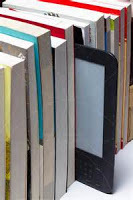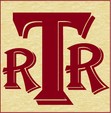Reader Purchasing
 As an indie author I like to have an idea of how readers chose books to read. I am sure I am not alone. Publicity and marketing is always a challenge, especially in these days when hundreds of thousands of books are being independently published. Consequently, any information that may help us target readers is invaluable.
As an indie author I like to have an idea of how readers chose books to read. I am sure I am not alone. Publicity and marketing is always a challenge, especially in these days when hundreds of thousands of books are being independently published. Consequently, any information that may help us target readers is invaluable.Before continuing there is one very important discovery indie authors really need to take on board: The majority of readers still prefer to buy physical books. Because most of us have difficulty getting an agent or traditional publisher we, by default, have to primarily rely on the internet for publication and marketing. This can become an all absorbing task and it is easy to forget there still remains a very large proportion of readers who are not digitally inclined. I know several people who have absolutely no on-line activity. May be hard to believe in these days of digital everything: tablets, smartphones, PCs etc. but it is a fact.
Some statistics
Please note the majority of the following is based upon the investigation of American readers’ habits. Nevertheless, I would consider the principles apply generally across the globe.
Only 73% of people read.40% only read print books.6% only read digitally. (This statistic is one we really need to take note of.)
Statistics from a different source:
65% have read print books in the last year.28% have read e-books.14% have listened to audio books.
What may we glean from this information? Print remains favourite!
We should not allow this to discourage us too much but need to be aware our on-line target audience (many of who probably only read digitally) only forms a small part of the overall readership. That does not mean we should give up. Of course we have, and should avail ourselves of the POD (Print-On-Demand) facility which may help though many still appear to prefer purchasing from a bricks and mortar book shop.
Genres
Top fiction genres: (1) Romance; (2) Erotica (What does this say about our society?); (3) Young Adult and Teen; (4) Fantasy; (5) Mystery and Detective (It surprises me, bearing in mind the popularity of television detective shows, ‘Detective’ is not higher.); (6) Gay and Lesbian; (7) Science Fiction; (8) Historical; (9) Thriller and Suspense (Another surprise); (10) Adventure.
Top non-fiction genres: (1) Biography (As an autobiographical/memoir author this pleases me no end.); (2) Health, Wellbeing and Medicine; (3) Business and Economics; (4) Self-Improvement; (5) Religion and Spirituality; (6) Relationship and Family; (7) Sports and Outdoor Recreation; (8) Education and Study Guides; (9) New Age; (10) Computer and Internet (Surprised me ‘Internet’ should fall in the last category. In these days of increasing internet activity, I would have thought it more popular. Perhaps, most who use it consider themselves sufficiently knowledgeable not to need to read up more.).
Sell Techniques
Pre-Orders: Most of you will no doubt have heard a lot over the last year or so about the ‘pre-order’ facility most on-line retailers now offer. It appears this has proven a very successful means of marketing books, for those who have availed themselves of the option. I must point out I have never tried it nor it seems have many indie authors. Nevertheless, the statistics are impressive. I understand 2/3 of the 200 top selling books were launched as pre-orders. I am also given to understand these authors earn approximately 3.5 times more than those who have not utilised the pre-order option. Clearly this option/facility is something we need to seriously consider.
Free: In the early days of self-publishing giving ‘free’ books proved an effective means for gaining new readers; readers may have been reluctant to spend out for a book by new and unknown authors. Subsequently the ‘free’ option appears to be having considerably less success and the debate regarding whether we should or should not follow this path has raged across all social media for some time. Last year, I understand, there were 39 more downloads of free books compared to those for priced ones. This is markedly down from previous years: 91 in 2013; 100 in 2012. The primary area where free books still appear to have more success are the ‘series’ ones where the first in the series is often given free. These earned 66% more downloads than the one-off books. The above figures are off-set by comments from some authors who continue to find the ‘free’ option works well for them. One suggested they gained approximately ten sells for every free book. I have taken this statement at face value having no means to ascertain the facts for myself.
Book Length: Apparently longer books sell better than short ones. Again this surprised me; in these days when many use tablets and smartphones to read, particularly when commuting, I would have thought shorter books more popular. Goes to show that many are still interested in good quality full length tales. Caveat: this statistic may have been distorted by multiple-author box sets.
Pricing
Again this is a topic that has been and is constantly discussed.
$3.99 - appears to be the most successful price for full length fiction.$0.99 - the suggestion is that this is similar to the ‘free’ option; designed to gain new readers.$1.99 - the advice is to AVOIDthis price. No one is sure why reader’s do not like this but the facts support the notion they do not. If your book is priced at $1.99 you are strongly advised to change to the more successful $2.99 or $3.99 or $0.99 if you are out to gain new readers.
On-line Presence
It seems most, but not all, bestselling authors have Facebook and Twitter accounts and a blog. In view of the multiple sites available this appears to be a minimal presence but I would suggest highlights those that are considered paramount for attracting attention.
Conclusion
Remember, overall, a high percentage of readers still prefer print books. If your genre is one of the less popular you need to think of ways to draw greater attention. I would suggest this may be achieved through engaging synopsis’ and blurbs. Also by highlighting in posts, tweets etc. why it would be of interest to the reader.Price your book, if you have decided not to give it free, at one of the optimum price ranges.Seriously consider the pre-order option.
I hope you have found the above interesting, informative and helpful.
Sources:
2015 survey by Smashwords (I publish with them). Please see note below.Recent PRC survey.Individual comments and observations in LinkedIn discussions.
Note: Smashwords distributes to a number of retailers however, Amazon, though included, forms a very small part of the sales that show up in their statistics. This means books included in the KDP Select programme are not included in the figures. Most, but not all, Smaswords statistical sells are made through iBooks and Barnes and Noble. I appreciate Amazon is the world’s largest on-line retailer however, I think it worthwhile to gain insight from other sources and points of view, providing us with perhaps a more balanced perspective.
Published on September 05, 2016 10:07
No comments have been added yet.



